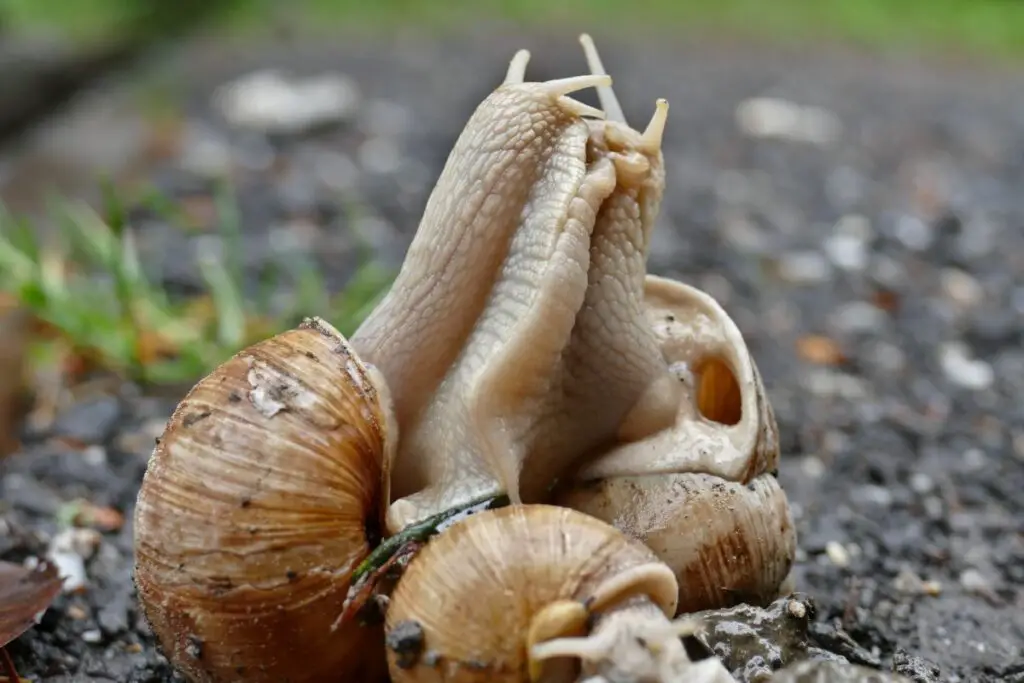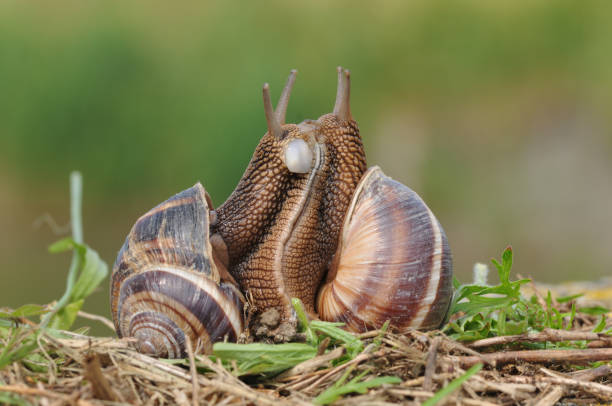Table of Contents
ToggleIntroduction
With their slow and deliberate movements, snails frequently occur as solitary creatures. However, these mollusks have a remarkable and diverse range of reproductive strategies contributing to their success in various ecosystems worldwide. How To Snails Reproduce? In this comprehensive guide, we will explore the intriguing world of snail reproduction, shedding light on the multiple methods, adaptations, and challenges these gastropods face to perpetuate their species.
How To Snails Reproduce: Anatomy And Physiology Of Snails
Before we delve into the intricacies of snail reproduction, it’s essential to understand the basic anatomy and physiology of these fascinating creatures.
Body Structure
Snails belong to the Gastropoda class and share common characteristics such as a spiral shell, muscular foot, and a head with sensory tentacles. Their reproductive organs find themselves near the front of their bodies.
Hermaphroditic Nature
Hermaphroditism is one of the most exciting things about snails’ bodies. Most snails have male and female reproductive organs to make eggs and sperm. Cross-fertilization, on the other hand, is more common than self-fertilization.
How To Snails Reproduce: Snail Reproduction Methods
Snails use different ways to reproduce based on their ecological niche and the conditions in their surroundings. Animals produce in two main ways: by laying eggs or giving birth to live young.
Oviparous Reproduction
Oviparous reproduction involves laying eggs, which subsequently develop outside the female’s body. This method is more common in land snails and certain aquatic snail species.
Egg Deposition: Oviparous snails protect their eggs from animals and the environment by putting them in a safe place. The eggs are in mucus-covered gelatinous tubes or masses.
Development: Once the eggs have been planted, they need an excellent place to grow. This climate can differ for each species, but it usually has the proper moisture and temperature.
Hatching: After a specific incubation period, the eggs hatch into juvenile snails. These juveniles are miniature versions of adult snails and undergo further growth and development as they mature.
Viviparous Reproduction
Viviparous reproduction involves the development of embryos inside the female’s body, leading to live birth. This method is more common in some aquatic snail species.
Internal Fertilization: Viviparous snails engage in internal fertilization. Mating partners exchange sperm packets, and fertilization occurs inside the female’s reproductive tract.
Embryo Development: The embryos develop within the female’s body once fertilized. They receive nutrients and protection from the female’s reproductive organs.
Live Birth: When the embryos reach a particular stage of development, the female gives birth to live juvenile snails. These juveniles are more developed and better equipped to face external environmental challenges.
How To Snails Reproduce: Mating And Courtship Behavior

Mating and courtship behavior in snails vary widely among different species. Some species engage in elaborate rituals, while others have simpler processes.
Courtship Rituals
Certain snail species, especially those in the terrestrial environment, engage in courtship rituals that can involve elaborate dances and tactile interactions. These rituals help ensure that mating partners are compatible and receptive.
How To Snails Reproduce: Mating Process
The mating process begins with the exchange of sperm packets between two snails. Each snail transfers its sperm packet into the reproductive tract of the other. This cross-fertilization ensures genetic diversity and reduces the risk of self-fertilization.
Copulation
During copulation, snails often align their bodies to facilitate the transfer of sperm packets. They may use specialized reproductive organs, such as the love dart, to aid.
How To Snails Reproduce: Challenges And Adaptations
Snails face various challenges in their reproductive endeavors, including predation, environmental factors, and competition for mates. To overcome these challenges, they have developed several remarkable adaptations.
Protective Egg Deposition
Snails deposit their eggs in hidden or sheltered locations to protect them from predators and environmental stressors. Some snail species also encase their eggs in tough gelatinous capsules or mucous-covered masses to provide an added layer of defense.
Timing of Reproduction
Snails often time their reproduction to coincide with favorable environmental conditions. They may delay recurrence during harsh seasons or when resources are scarce.
How To Snails Reproduce: Self-Fertilization Avoidance
To prevent self-fertilization, hermaphroditic snails have developed mechanisms to ensure cross-fertilization. These mechanisms can include the simultaneous exchange of sperm packets or specific behaviors that signal readiness to mate.
Love Darts
Certain species of snails possess a specialized structure called a love dart. Love darts are sharp, calcareous structures that are used during copulation. They can pierce the partner’s skin, deliver hormones that influence reproduction, and increase the chances of successful fertilization.
Aestivation and Hibernation
In response to unfavorable environmental conditions, some snail species enter a state of dormancy known as aestivation (in dry conditions) or hibernation (in cold conditions). This dormancy allows them to conserve energy and survive until conditions improve for reproduction.
How To Snails Reproduce: Parental Care In Snails
Parental care in snails varies among species and is often limited to protecting the eggs or newly hatched offspring.
Egg Protection
Some snail species exhibit maternal care by guarding their eggs or the surrounding environment to ensure the survival of their offspring. They may lay their eggs in hidden crevices or caves to protect them from predators.
Offspring Provision
In viviparous snail species, the female provides direct care to her offspring by nourishing and protecting the developing embryos within her body until they are ready for live birth.
How To Snails Reproduce: Asexual Reproduction In Snails
While sexual reproduction is the primary mode of reproduction in snails, some species also exhibit asexual reproduction, known as parthenogenesis. In parthenogenesis, females can produce offspring without fertilization by males.
Advantages of Asexual Reproduction
Parthenogenesis allows for rapid population growth under favorable conditions. It can also be advantageous when males are scarce or when environmental conditions are not conducive to mating.
Limitations
Despite its advantages, asexual reproduction can reduce genetic diversity within a population, making it more susceptible to disease and environmental changes. Thus, most snail species rely on sexual reproduction to ensure genetic diversity and adaptability.
How To Snails Reproduce: Life Cycle And Longevity
The life cycle of a snail can vary significantly depending on the species, environmental conditions, and ecological niche. Some snail species have relatively short life spans, while others can live for several years or even decades.
Growth and Development
Snails undergo a series of growth stages as they mature from juveniles to adults. Temperature, food availability, and environmental conditions can influence their growth rate and development.
Longevity
While many factors influence the longevity of snails, some species are known for their exceptional longevity. For example, certain land snail species must live for over 20 years.
Conclusion
Snail reproduction is a complex and diverse process that reflects the adaptability and resilience of these remarkable gastropods. Their ability to employ various reproductive strategies, adapt to changing environmental conditions, and overcome challenges such as predation and competition has contributed to their success in a wide range of ecosystems. How To Snails Reproduce? By exploring the intricacies of snail reproduction, we gain a deeper appreciation for the diversity of life forms and strategies in the natural world.







